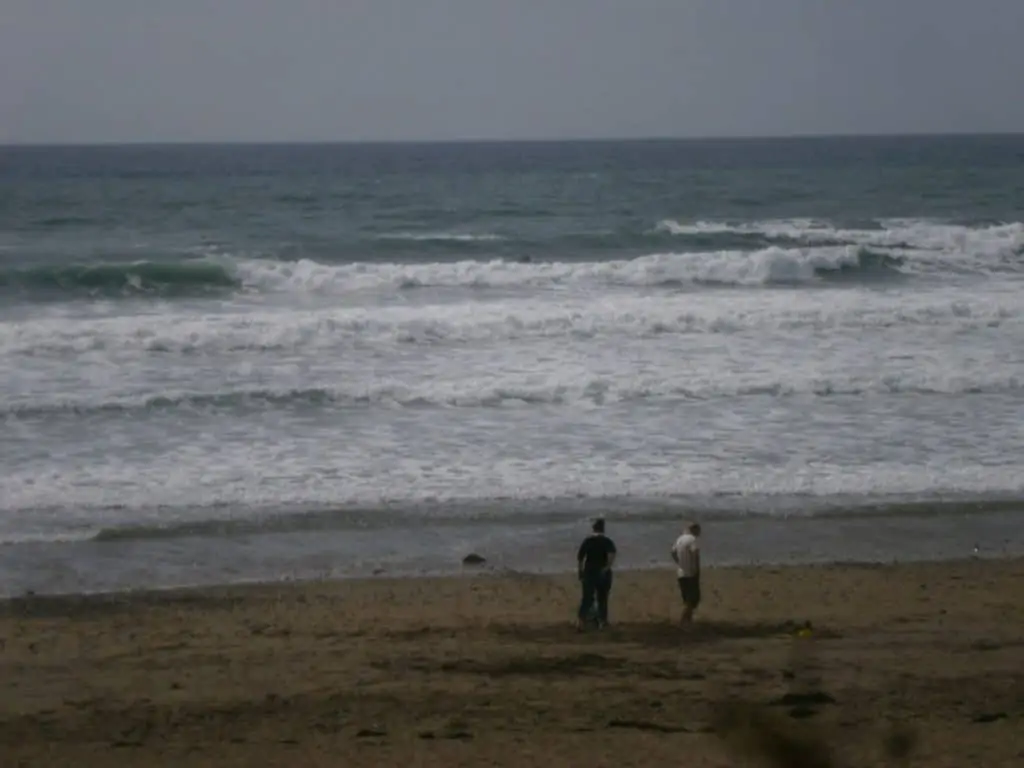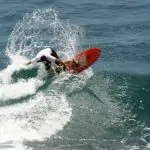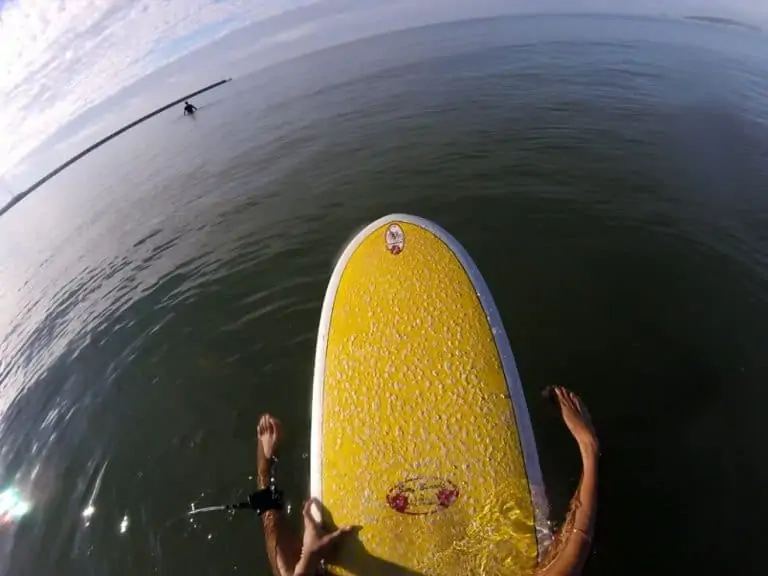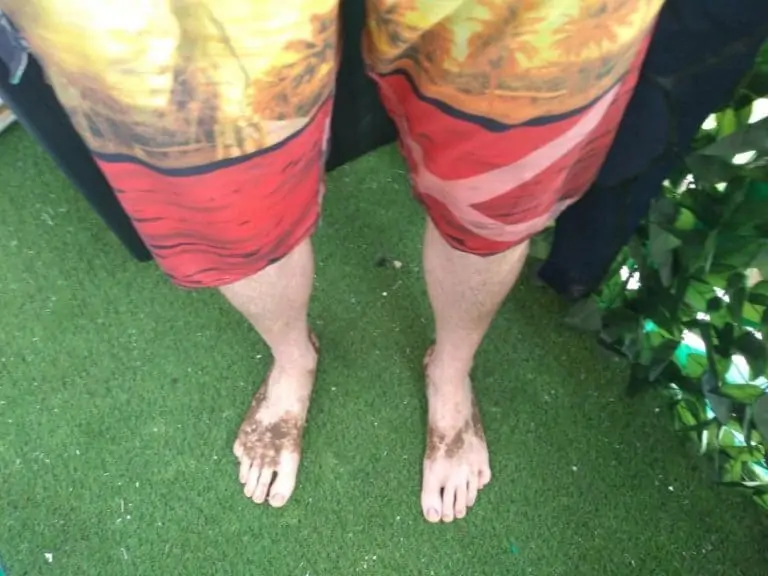Is it Better to Surf at High or Low Tide? (PS There’s a Better Option!)
Given that there are so many factors in learning to surf, it can all get a bit confusing and make you think that you might miss the next best swell.
You have to look at the conditions and try to guess when the waves will be best, but a key factor in this is also the perfect stage of the tide for surfing.
So, is it better to surf at high or low tide? The best tide time is usually on an incoming tide in between the extremes of high and low. It depends on your chosen spot since some places only have waves at low or high tide while others are dangerous on the wrong tide, as will be explained.
What does low tide mean for surfing?
Low tide means that the sea is the furthest out that it will go and that the tide is at the bottom of the tidal range.
This leaves the most beach exposed and can mean a longer walk to get to the sea for surfers.
If there are rocks on a beach, then these may be exposed at low tide, making it unsafe to surf near them. If surfing at a reef break, a low tide might also make the rocks below extremely shallow, again making it more dangerous for surfing. This is not for all reef breaks, but many will be known as more dangerous at low, with some being unsafe to surf.
Low tide can also mean lots of dumping waves that close-out. This is pretty common at many beach breaks around the world.
You might also find that, as the tide is dropping to low, the waves become weaker. It’s generally not a good time to surf just before low tide for this reason.
Remember also to check out my more detailed article on the best time of day to surf for beginners, with many more factors than just the tide considered.
As the tide gets close to its lowest, you may want to get out and wait about two hours for it to turn. This is because that stage of the tide can be plagued by strong currents and fewer, weaker waves.
The strange conditions before low tide are likely because of the pull of the outgoing tide, with this force running directly against the incoming waves.
Certain famous surf spots around the world like Super Suck in Indonesia are known as being lethal on a low tide.
In fact, when I was there back in 2010, a few of the Australian surfers who made a regular trip over there said that it was a no-go when the rock out the back was visible as the tide dropped, highlighting the importance of the awareness of your local conditions and the tide when surfing
- Be sure to check out this super helpful post packed with tips on surfing new spots before you paddle out!
What does high tide mean for surfing?
High tide is when the sea is at the top of the tidal range, and is the highest that the water goes.
High tide can be a good time for surfing but again it depends on your chosen spot.
This is because some beaches will have what’s called a ‘shorebreak’ on the steeper part of the beach as the sea reaches high tide.
A shorebreak means that waves break directly onto the sand, which as you can already imagine is not good for surfing since it can mean breaking your board (or your body!).
Although there are some surfers who like to surf shorebreaks, like Waimea in Hawaii or Newport Beach in California, these are generally much more for bodyboarders since they don’t have fins and a softer board.
The first few seconds of the video below give a clear idea of how a shorebreak looks, and also why you don’t really want to try surfing one!
Another point about high tide for surfing is that it can cause the waves to go quite ‘fat’ and warbly. By this, I mean when the waves struggle to break because of the steepness of the beach.
This video clip from Canggu in Bali shows a slightly ‘fat’ high tide wave. If you look closely, you can see a wave going out to sea forming what’s called a backwash wave; this then pushes through the incoming waves and makes them harder to catch and ride, so not great.
Incoming vs Outgoing Tide: What is the Difference?
An incoming tide means that the tide is rising, or pushing, and the shoreline will rise on the beach, gradually covering more of the beach.
An outgoing tide means that the tide is falling, or dropping, and the sea will drop back on the beach, exposing more of it.
An incoming tide is better for learning to surf at most spots since the dropping tide can create currents that pull out to sea as the tide pulls back on the beach.
This doesn’t mean that an incoming tide has no currents, it’s just often that little bit safer and is therefore recommended for learning to surf.
On the flipside, surfing when the tide is going out can often mean that the waves are weaker and have a current running through them, so choose your time and spot carefully with this in mind.

Best tide for surfing
In general, the best tide for surfing is anywhere from an hour after low tide to an hour before high. This gives you 4 hours, plenty of time for most surfers. This is because rip currents going out to sea are much more likely on an outgoing tide, so surfing after low on an incoming tide is best.
Height of the Tide
There are also major differences on any given day in the height of the tide, which in turn affects surfing.
Since this varies day to day, it’s worth checking the exact height of the tide before planning on surfing at a specific spot.
This is because high tide might be good at one surf spot with an average high tide, but a few days after that with a larger high tide, the same spot with the same swell could be unsurfable.
The extremes of tide heights happen around new and full moons, so always keep an eye on the height and the moon.
In fact, when I was in Bali, I remember the locals saying that “full moon, big waves”; it certainly seemed to bring bigger waves often, along with the larger tides, so that might be one more fact to look out for when checking the conditions for your next surf spot!
Related Questions
Are waves bigger at high or low tide? It depends on the spot and also the weather conditions. Usually, the waves will be biggest from an hour after low until an hour before high, but this can change depending on what is beneath the waves at any given time and the swell conditions for that day.
If the swell is picking up while the tide drops, then it may well be bigger on a lower tide so it’s something that does not have a hard and fast rule for it. As usual, pay attention to your local conditions and you will see how it affects wave size there.
How do you know if waves are good for surfing? You can tell that waves are good for surfing when there are other people out, the waves are not too big and are breaking evenly. Look for signs of shallow rocks or strong currents on the surface of the water. Also look for clear entry and exit points.
If the waves look like they are great for surfing but there is nobody in, then there is usually a reason for this. Remember, if it seems too good to be true, then it probably is!







